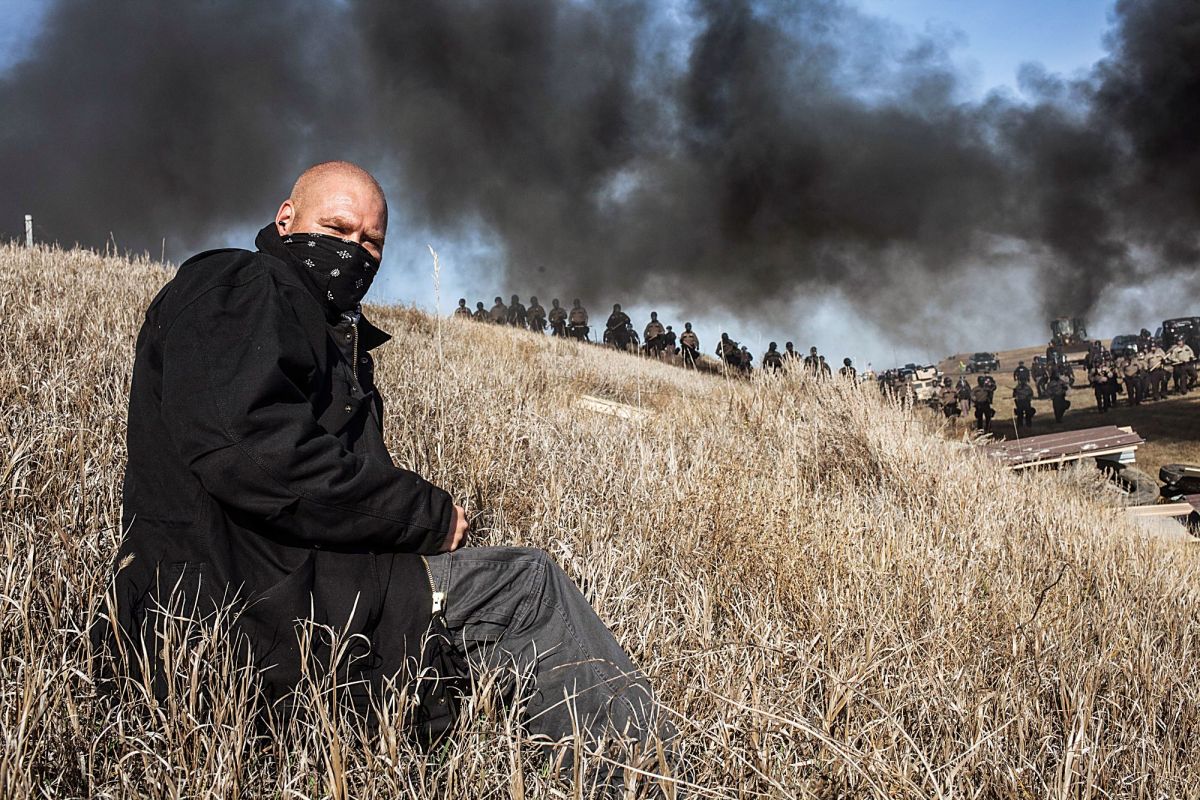Textbooks often overlook the uncertainty and chaos behind the movements that have irrevocably changed history. But the truth is: Revolutions are messy and unpredictable.
The Sundance Film Festival documentary “Akicita: The Battle of Standing Rock” offers an unsparing view of the turmoil behind the scenes of the recent, months-long protest against installation of the Dakota Access Pipeline across the Standing Rock Indian Reservation in North Dakota.
The film is especially intense, not only because events surrounding the pipeline are still unfolding, but because its director was trying to chronicle the protest while also participating. In his statement about the film, Cody Lucich says: “The truth is that I never wanted the burden of telling this story. I wanted to fight, build barricades, and release weekly videos to raise awareness about Standing Rock.”
But, Lucich, a member of the Maidu Tribe from Northern California, also wanted to ensure the story was told by Native American voices.
The film is dominated by close-up footage of the confrontations that Lucich witnessed during the protesters’ dramatic eight-month occupation of the camp at Standing Rock. According to Lucich, “I was at the complete mercy of the story. There was no planning or control. I couldn’t go out and plan a shoot, or figure out when the story was over.”
The mood of the film soars as tribal representatives, environmental leaders, celebrities and regular citizens from across the country join the protest. But those high hopes are dashed when Lucich exposes internal disagreements between organizers and, ultimately, the brutal tactics used by the oil company to quell the protest. The film includes graphic scenes of heavily armed police unleashing dogs, teargas and mace on unarmed protesters.
Those highs and lows are described in heartrending detail by about a dozen participants in the protest. They reappear as the protest intensifies, and in its aftermath, to explain how their native traditions shaped their response to the oil company, to lawmakers and to local lawmen.
Lucich’s effort to condense almost a year’s worth of footage into a meaningful film received a boost from producers Gingger Shankar and Heather Rae.
“The fact that this story is told from an inside perspective, through the eyes of a Native warrior, is one of the things that makes it so important,” said Shankar.
In addition to providing funding and other support, Shankar, a noted musician in her own right, agreed to compose music for the film.
“It was for the movement. I wanted to help with funding and winter supplies. Whatever was needed, I wanted to be involved. And, of course, once I realized Cody was a one-man show who had been capturing the occupation for eight months, I wanted to help any way I could,” she added.
The encampment was forced to disband almost exactly a year ago, and the pipeline is now a stark reality on the North Dakota landscape. But the protest, and Lucich’s documentary, highlight the larger issues of water quality, native sovereignty and the unsavory tactics that businesses often use to protect their financial interests. Those issues have not been resolved, and as the film suggests, this revolution may not yet be over.
Editor’s note: Filmmakers are still working on the film, and the version screening at Sundance is not the final cut.
“Akicita: The Battle of Standing Rock,” an entry into the Sundance Film Festival’s Documentary Premieres program, is scheduled to screen at the following times and locations:
Thursday, Jan. 25, 6 p.m., Temple Theatre
Saturday, Jan. 27, 9 p.m., Tower Theatre in Salt Lake City

